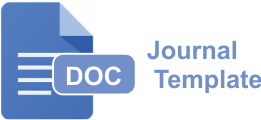QUICK MENU
Author Contributions
We invite authors to provide an author statement file detailing their specific contributions to the paper using the applicable CRediT roles for transparency: Conceptualization; Data curation; Formal analysis; Funding acquisition; Methodology; Project management; Resources; Software; Supervision; Validation: Visualization; Roles/Writing - original draft; Writing - review and editing. Authorship statement should be formatted with author names first and CRediT role(s) second.
CRediT Author Statement
CRediT (Contributor Roles Taxonomy) was introduced to recognise individual author contributions, reduce authorship disputes and facilitate collaboration. The idea followed a 2012 collaborative workshop led by Harvard University and the Wellcome Trust, with input from researchers, the International Committee of Medical Journal Editors (ICMJE) and publishers, including Elsevier, represented by Cell Press.
CRediT allows Authors to share an accurate and detailed description of their diverse contributions to the published work.
- The corresponding Author is responsible for ensuring that all authors agree with accurate descriptions.
- All authors' role(s) should be listed using the above relevant categories.
- Authors may have contributed in multiple roles.
- CRediT in no way changes the journal's criteria to qualify for authorship
CRediT statements should be provided during the submission process and will appear above the acknowledgement section of the published paper, as shown further below.
|
Term |
Definition |
|
Conceptualization |
Ideas; formulation or evolution of overarching research goals and aims |
|
Methodology |
Development or design of methodology; creation of models |
|
Software |
Programming, software development; designing computer programs; implementation of the computer code and supporting algorithms; testing of existing code components |
|
Validation |
Verification, whether as a part of the activity or separate, of the overall replication/ reproducibility of results/experiments and other research outputs |
|
Formal analysis |
Application of statistical, mathematical, computational, or other formal techniques to analyze or synthesize study data |
|
Investigation |
Conducting a research and investigation process, specifically performing the experiments, or data/evidence collection |
|
Resources |
Provision of study materials, reagents, materials, patients, laboratory samples, animals, instrumentation, computing resources, or other analysis tools |
|
Data Curation |
Management activities to annotate (produce metadata), scrub data, and maintain research data (including software code, where it is necessary for interpreting the data itself) for initial use and later reuse |
|
Writing - Original Draft |
Preparation, creation and/or presentation of the published work, specifically writing the initial draft (including substantive translation) |
|
Writing - Review & Editing |
Preparation, creation and/or presentation of the published work by those from the original research group, specifically critical review, commentary or revision – including pre-or postpublication stages |
|
Visualization |
Preparation, creation and/or presentation of the published work, specifically visualization/ data presentation |
|
Supervision |
Oversight and leadership responsibility for the research activity planning and execution, including mentorship external to the core team |
|
Project administration |
Management and coordination responsibility for the research activity planning and execution |
|
Funding acquisition |
Acquisition of the financial support for the project leading to this publication |
* Reproduced from Brand et al. (2015), Learned Publishing 28(2), with permission of the authors.







